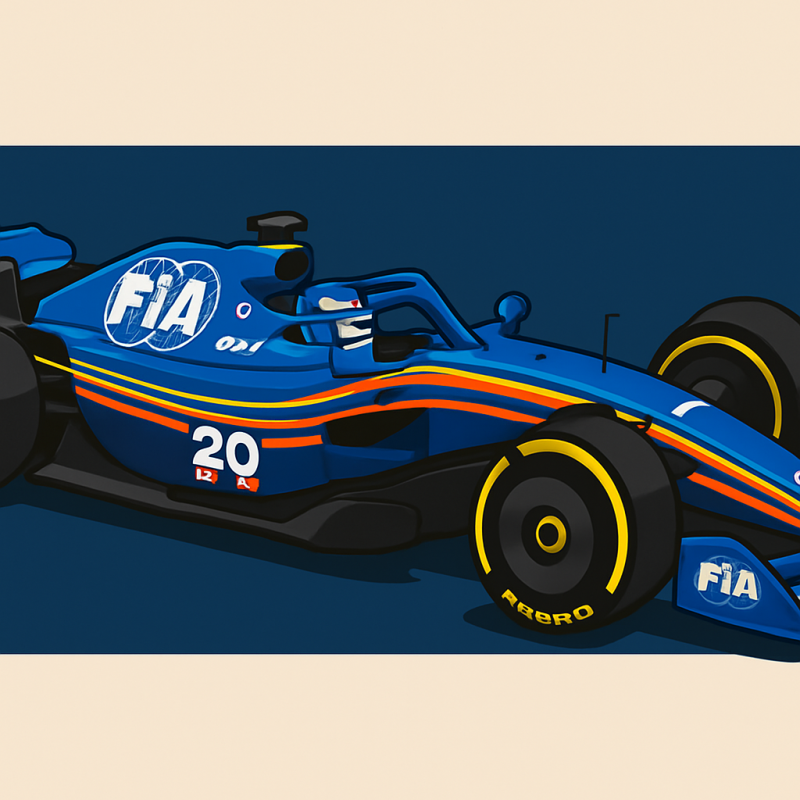Williams’ Vowles welcomes 2026 ‘clipping’: “Slower at the end of the straight? Good.”
Even with 2025 still throwing punches, the paddock’s gaze keeps drifting to 2026 — the year Formula 1 rips up the template and tries something bolder. Smaller cars. Lighter cars. Active aero. No DRS. And power units that swing the balance further toward electric deployment. If you’ve heard whispers that the 2026 machines might run out of puff before the braking boards, you’re not imagining it. James Vowles says that’s real — and he’s absolutely fine with it.
“I think next year’s car, so will it be slowing? Yes,” the Williams team principal told Sky F1. “Would I think it will be a bad thing? No. Because I think there’s quite an interesting dynamic in overtaking you start getting next year.”
That “slowing” is the much-debated clipping effect, when the uprated MGU-K — rising from 120 kW to a hefty 350 kW — hits its deployment ceiling before the end of a long straight. The internal combustion engine stays, now running fully sustainable fuel, while the costlier MGU-H is gone. Add in the FIA’s “nimble car” brief — a 30 kg weight drop and a trimmer footprint — and 2026 is shaping up as a reset that changes how drivers attack and defend.
The DRS flap, long the blunt instrument for passes, will be retired in favour of active aerodynamics. That should mean drivers manage their own aero and energy as weapons, rather than waiting to arrive in a detection zone and push a magic button. Vowles’ view is that energy management turning into a live, visible chess match could be better racing than DRS fly-bys.
Right now, a leading driver can be a sitting duck: a toe down the straight, the rear wing pops open, and it’s largely academic. In 2026, timing and efficiency matter. Drain your battery too early and you stall near the end of the straight; save too much and you never mount the attack. It’s a trade-off that rewards craft — and that’s the point.
There’s also a purity to it. If one power unit clips sooner than another, that’s competition, not contrivance. The powertrain suppliers that manage harvesting, storage and delivery most cleverly — how much energy they grab under braking, how they phase torque with the engine, how they tune the mapping for different corners — will be the ones who dictate the terms of engagement. That’s Formula 1 in its rawest form: build something smarter and go win with it.
Of course, “organic” doesn’t automatically mean “easy.” Teams will spend a chunk of 2026 figuring out where to spend precious electrical joules. Do you blast deployment early to win the run out of the last corner? Or hold back, waiting to pounce when the car ahead starts to clip? Defending drivers will be doing the same maths in their mirrors. The result could be less of the binary, DRS-or-no-DRS dynamic and more of a flowing duel, with different points on the straight where moves become possible.
The chassis changes should help, too. Smaller, lighter cars and smarter aero should reduce turbulence and make following less of a punishment. Active aero — deployed for efficiency on the straights, downforce in the corners — promises less drag without the “free pass” effect. If it works, you won’t need an artificial boost; you’ll have two drivers armed with similar tools, deciding when to push and when to reload.
There is a real risk in all this: get the balance wrong and the cars could feel neutered at top speed, with awkward throttle traces and odd closing rates. But the alternative is keeping a system everyone agrees is tired. Vowles, to his credit, is leaning into the change rather than fearing it. Williams, fresh from rebuilding its foundations, sees opportunity in a rulebook that rewards operational smarts and clean-sheet thinking.
And make no mistake, 2026 will stress every department. Aerodynamicists must master new active surfaces. PU partners have to nail reliability and energy efficiency without the MGU-H safety net. Drivers will need to relearn how to hunt — where to position the car, when to bait, when to burn. That’s a lot of moving parts. It’s also why the best teams usually rise.
So yes, expect to hear more about “clipping” over the winter. Expect a bit of straight-line fade late in the run toward Turn 1. Expect headaches and some early-season grumbling. But if it trades the DRS slam-dunk for a more nuanced fight — if it turns overtakes into something drivers build over corners rather than trigger with a switch — the sport will be better for it.
Vowles has called it early. Now it’s up to the rest to decide whether 2026’s new rulebook is a problem to fear, or an advantage waiting to be built.




